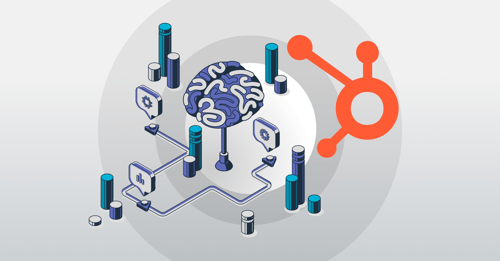In this article, we explore how HubSpot's customization capabilities have evolved, how they compare to Salesforce, and what businesses need to consider to avoid the pitfalls of over-customization.
As businesses grow, their processes become more complex—and so do their CRM needs. The challenge lies in striking the right balance between using out-of-the-box features and implementing tailored customizations that align with unique workflows, industry standards, and compliance requirements.
No two organisations operate the same way, and that’s reflected in how they approach CRM configuration. Whether you're new to CRM, scaling from a basic setup, or considering a transition between platforms like HubSpot, Dynamics, and Salesforce, understanding the trade-offs between flexibility, usability, and long-term maintainability is key.
Throughout this article, we’ll look at how much customization is beneficial—and where it can become a liability. We'll also break down how HubSpot compares to Salesforce in terms of flexibility, extensibility, and real-world application, to help you make a more informed CRM decision.
HubSpot vs Salesforce: which CRM is more customizable?
In the CRM world, the debate between HubSpot and Salesforce often centres on how deeply each platform can be customized. Historically, HubSpot was seen as less flexible than Salesforce, better suited for mid-market teams than large, complex enterprises.
That’s no longer the case.
Over the past two years, HubSpot has made aggressive investments to transform its CRM into a highly extensible, developer-friendly platform with enterprise-grade capabilities. From advanced AI tools to deeper integration flexibility and stronger data governance, HubSpot is now positioned to support far more complex business requirements.
Key areas where HubSpot has evolved:
- AI built from the ground up: HubSpot’s new Smart CRM is infused with AI at the core, not layered on as an afterthought. With Breeze as the underlying AI infrastructure, HubSpot enables everything from predictive deal insights to AI-powered agents that can act on behalf of reps. ChatSpot adds conversational AI into the experience, while new copilots assist with content generation, automation logic, reporting, and more.
- Unified platform with accelerated connectivity: Instead of relying on piecemeal integrations, HubSpot is leaning into a unified platform strategy. Faster API releases, improved extensibility, and native tools like custom objects, data sync, and programmable automation allow businesses to create tailored experiences while staying within the core platform, reducing integration debt and boosting stability.
- UI extensions and custom development frameworks: Developers can now build deeply customized interfaces inside HubSpot using its React-based component framework or embed custom iFrames. These tools let teams tailor the CRM to reflect specific workflows, personas, or departmental needs.
- CDP-like data handling capabilities: HubSpot is increasingly moving toward CDP-style functionality, with improved data ingestion pipelines, custom behavioral events, and segmentation tools that span the full customer journey. While not a full CDP yet, the direction is clear and closing fast.
- Stronger data privacy & compliance features: As enterprise buyers demand more from their tech stack, HubSpot has stepped up with HIPAA-ready environments, enhanced permissions and data partitioning, and more granular control over sensitive data. These updates make it a viable option for sectors that require rigorous compliance, like healthcare and financial services.
These advancements mark a new era for HubSpot, one where the platform can flex to meet the demands of large, multi-team organizations without losing the usability it’s known for.
Now let’s look at how Salesforce compares with its long-standing strengths in customization, extensibility, and enterprise maturity.
Where Salesforce still leads in customization
While HubSpot has made impressive progress, Salesforce continues to lead in several advanced areas of CRM customisation. Its long-standing dominance is built on a feature-rich, enterprise-grade framework that offers deep flexibility across a wide range of functions.
Key areas where Salesforce maintains an edge include:
- Object customisation depth: Salesforce has long been known for its robust and highly flexible object model, ideal for complex data architectures and industry-specific customisation. However, HubSpot has steadily narrowed the gap, introducing more advanced features like custom objects, associations, calculated properties, and dynamic segmentation. Today, HubSpot’s object model is far more comparable to Salesforce’s than it was even a year or two ago, offering real flexibility for enterprise use cases.
- Advanced formula fields and logic: Salesforce offers deep flexibility for complex logic, with powerful formula fields and automation tools built to handle highly specific business rules. HubSpot has significantly closed the gap with features like calculated properties, custom-coded actions, and data quality automations, enabling more advanced logic without heavy technical lift.
- Role hierarchies and advanced access control: Salesforce continues to lead in advanced permission management, with robust role hierarchies, field-level security, and support for complex multi-org architectures, all critical for large, global teams with layered access needs. HubSpot has made strong progress, introducing team-based partitioning, user permissions by object, and more granular controls — though Salesforce still holds the edge in enterprise-scale flexibility.
- Visual workflow design: Tools like Process Builder and Flow Builder let users create sophisticated automations with visual tools, streamlining the design and deployment of business processes.
- AppExchange ecosystem: With thousands of third-party apps available, Salesforce’s AppExchange provides an unmatched level of extensibility and integration possibilities.
While Salesforce still offers greater depth in customisation, the gap is narrowing. HubSpot’s evolving capabilities, particularly in automation, AI, and developer tools, make it an increasingly strong alternative.
FAQ: How customizable is HubSpot?
In this section, we tackle the most common questions about HubSpot’s customization capabilities, helping you understand where it shines, where limitations may exist, and how it compares in real-world flexibility.
1. What are the main ways to customize HubSpot?
HubSpot offers a broad range of customization options to suit different levels of technical expertise. From drag-and-drop UI workflows to custom-coded actions and webhook integrations, the platform allows users to tailor CRM processes and build API-driven functionality that fits their business needs.
2. How does HubSpot ensure data accuracy?
HubSpot supports data integrity through conditional logic in forms and records, rules for custom properties, and validation options via Operations Hub or CRM cards. Its built-in data quality features, like property formatting suggestions, duplicate detection, and enrichment, are now enhanced by AI-powered data cleansing capabilities, helping teams proactively surface and resolve inconsistencies. While not as code-intensive as Salesforce, HubSpot strikes a strong balance between usability and control.
3. What are the options for reporting and accessing data in HubSpot?
HubSpot provides several pathways for accessing and analysing data. Users can leverage integrations like Snowflake for SQL-style queries, use REST API or GraphQL for tailored data retrieval, and tap into the HubSpot Marketplace for reporting tools that expand on native capabilities.
4. How does HubSpot handle data types and relationships?
Through its UI and Property Management tools, HubSpot offers clear visibility into data types. It uses associations to define relationships between records, supported by an Entity Relationship Diagram (ERD) and the ability to create custom objects, helping users manage data complexity with a simplified interface.
5. Can HubSpot support advanced or custom-built solutions?
Yes, HubSpot is highly extensible. From serverless functions in CMS Enterprise to dynamic CRM cards and complex automation logic, the platform supports a wide variety of bespoke use cases. Businesses of all sizes have used HubSpot to deliver highly tailored solutions, from local service providers to global enterprises.
While HubSpot may not offer the same level of deep, technical customisation as Salesforce, it provides a strong balance of flexibility and usability for most business needs.
But as you consider how far to push customisation, regardless of platform, it’s important to understand the risks that come with going too far.
The pitfalls of excessive CRM customization
While customization is a sought-after feature, a CRM that is overly customizable also comes with a number of drawbacks.
Here are some important considerations:
- Complexity and maintenance burden: The more customized a CRM, the higher the complexity in setup and ongoing maintenance. This complexity can pose challenges for users, particularly those without advanced technical expertise, leading to potential errors and inefficiencies.
- Steep learning curve for users: A highly customizable CRM often requires extensive training for users to navigate and utilise the system effectively. This steep learning curve can impede user adoption and hinder the overall productivity of the team.
- Delayed implementations and higher costs: Excessive customization can lead to prolonged implementation timelines and higher associated costs. Businesses may find themselves investing substantial resources in tailoring the CRM to perfection, only to encounter delays and budget overruns.
- Risk of over-engineering: customization without a clear strategy can result in over-engineering, where unnecessary features and complexities are introduced. This not only adds to the overall cost but can also lead to a system that is cumbersome and counterproductive.
- Challenges in upgrades and integrations: Highly customised CRMs may face challenges when it comes to upgrading to newer versions or integrating with third-party applications. The intricacies of customizations can create compatibility issues and hinder the seamless integration of new features or technologies.
While HubSpot may not match Salesforce feature-for-feature in customization depth, its continual improvements and adaptability make it a compelling choice for businesses of various sizes. Striking this balance ensures a CRM that aligns with the unique needs of the organisation without succumbing to the potential pitfalls of excessive customization.
The key lies in choosing a CRM that not only meets the current customization requirements but also remains scalable and user-friendly for future growth and innovation.
Finding the right balance in CRM customization
HubSpot may not match Salesforce’s extensive customisation feature-for-feature, but its ongoing enhancements and flexibility make it a powerful choice for businesses of all sizes.
The key is striking the right balance, customizing your CRM enough to fit your unique needs without overcomplicating workflows or user experience.
As your organization plans its CRM strategy, it’s crucial to weigh your customisation goals against practical functionality and long-term scalability.
As a global HubSpot partner, we specialize in designing and developing customised CRM solutions that align perfectly with your business processes.
Contact our team today to start transforming your CRM vision into reality.







-3.png?width=500&height=320&name=Matt%20-%20imagery%20bank%20(8)-3.png)





